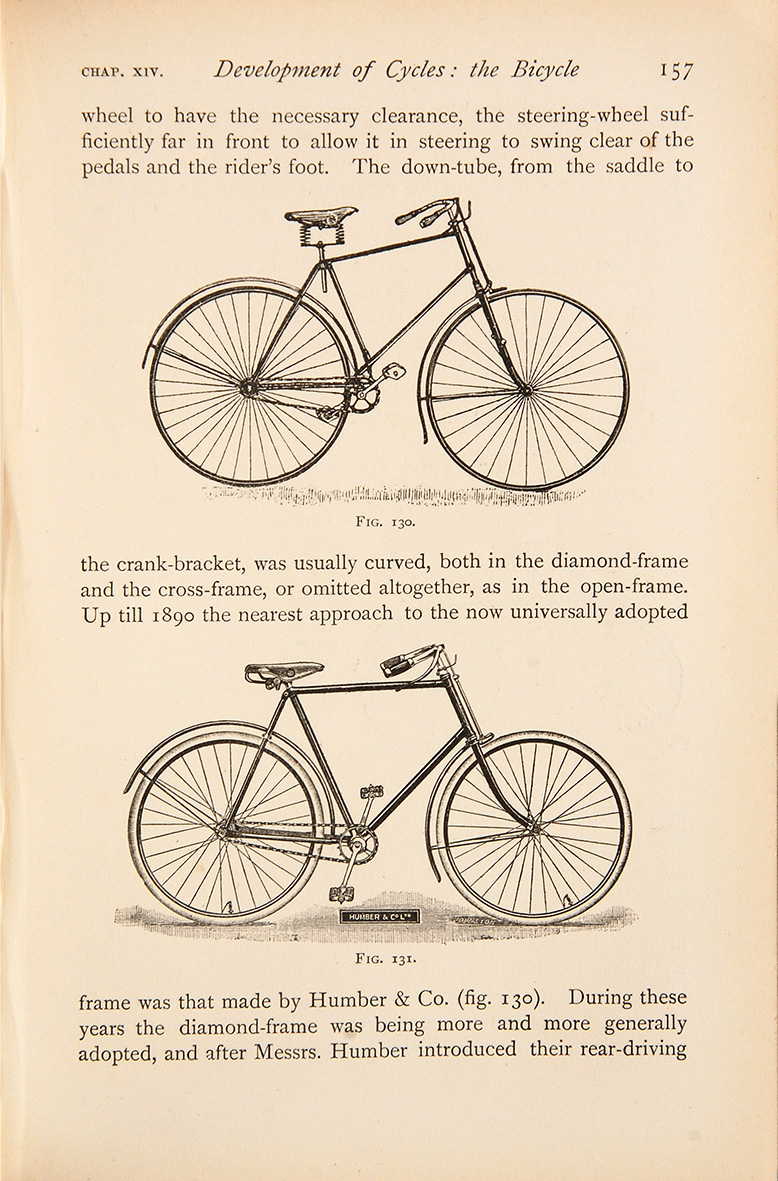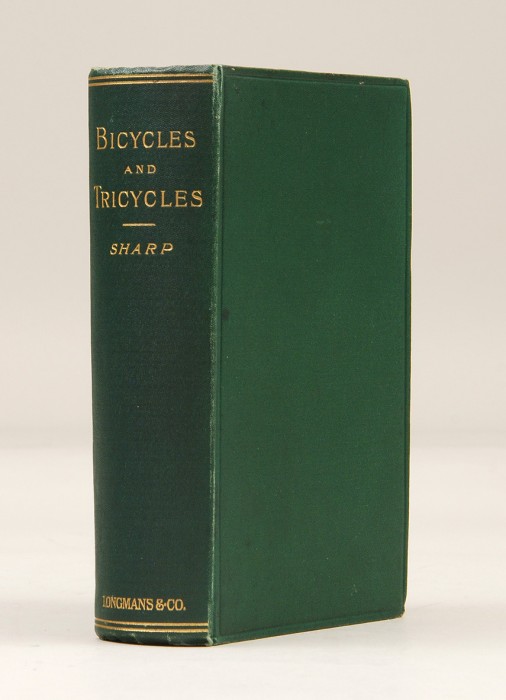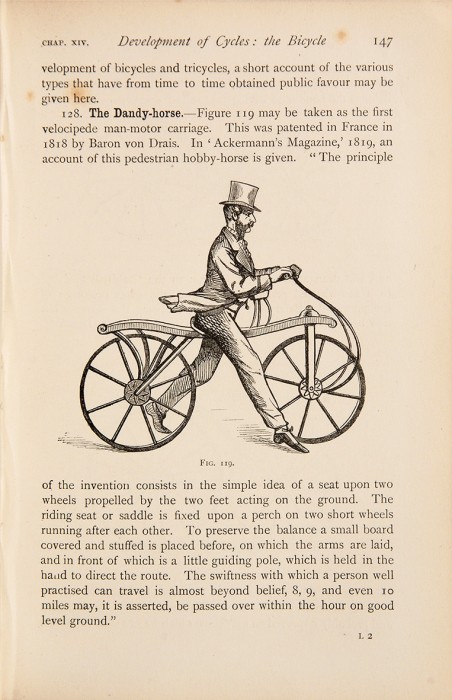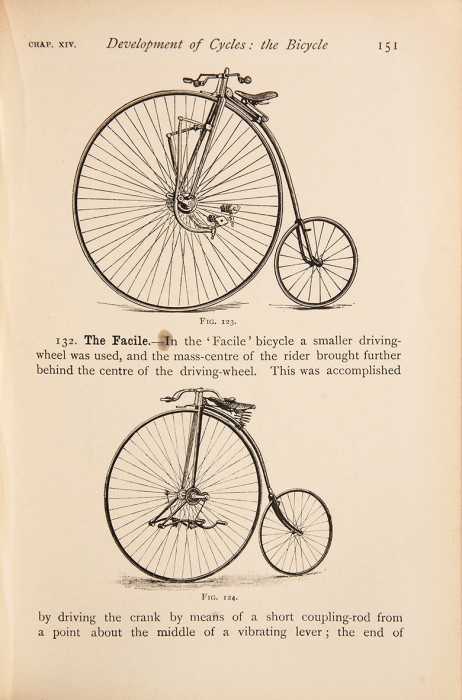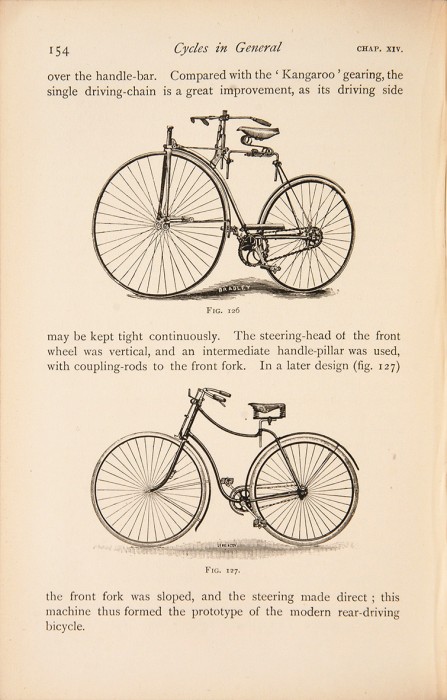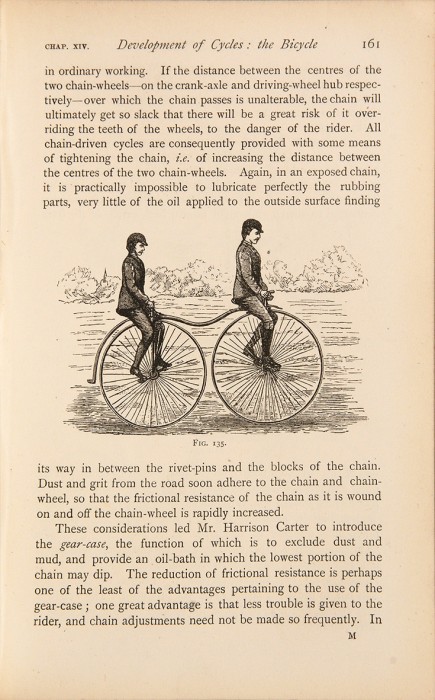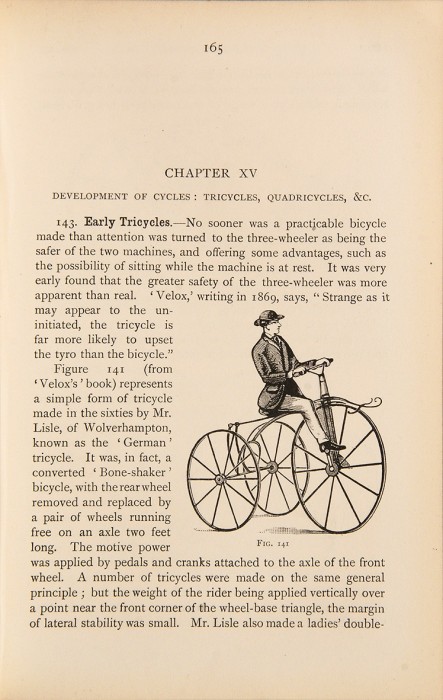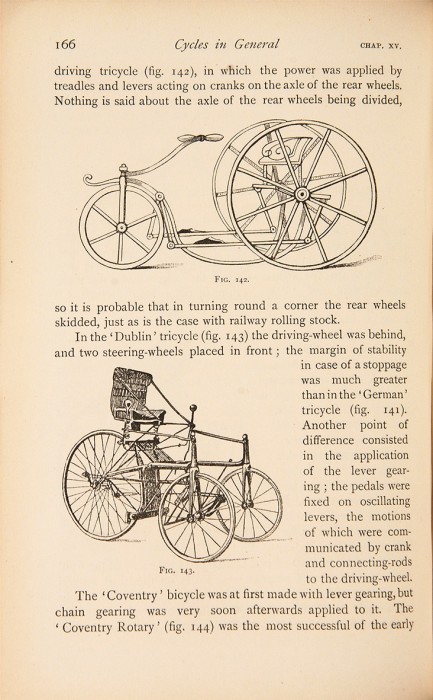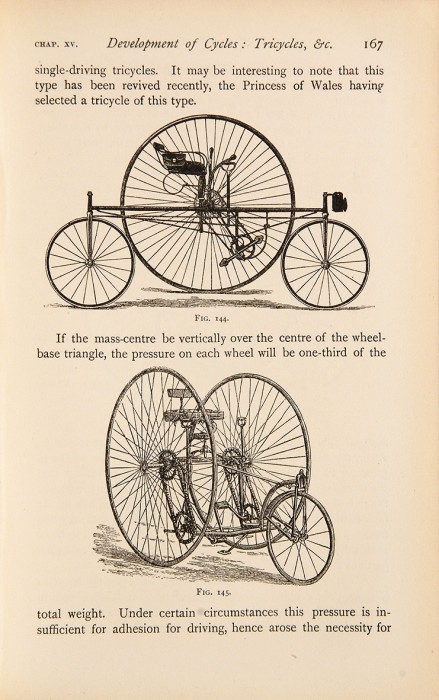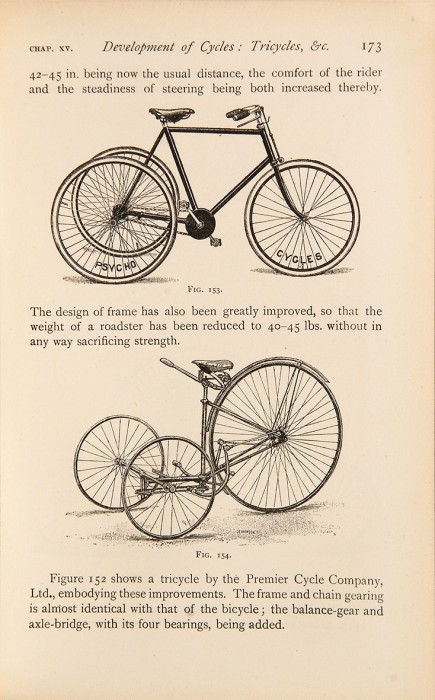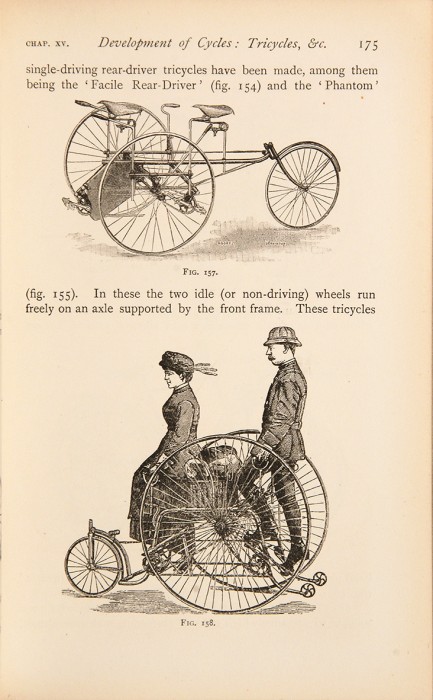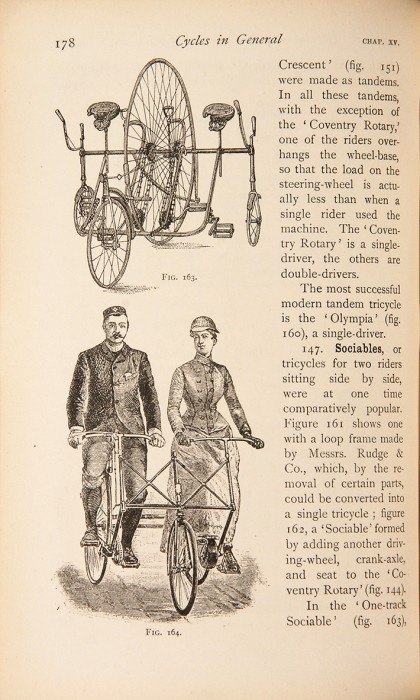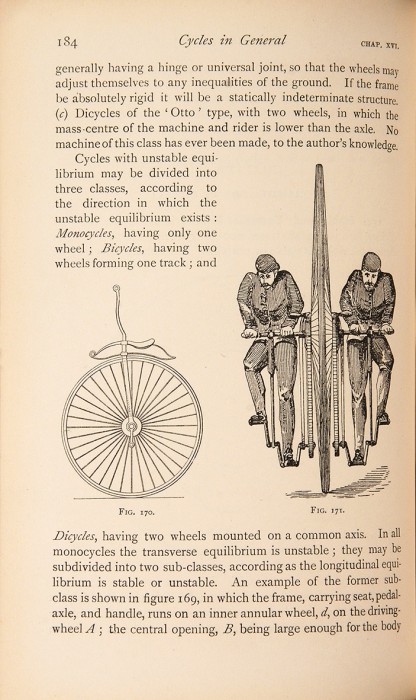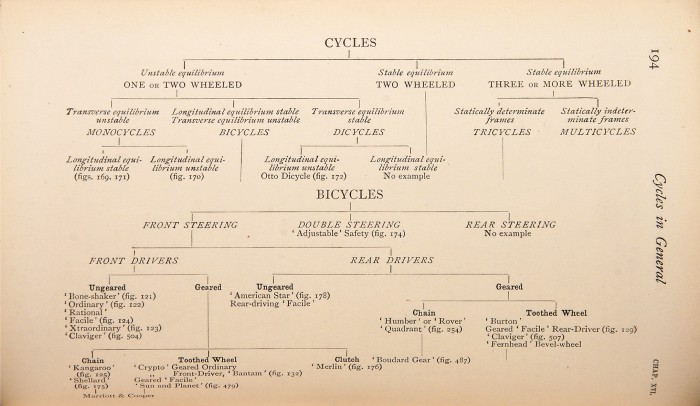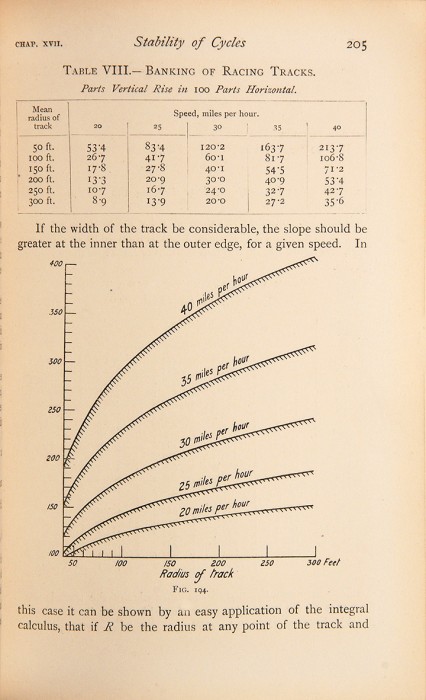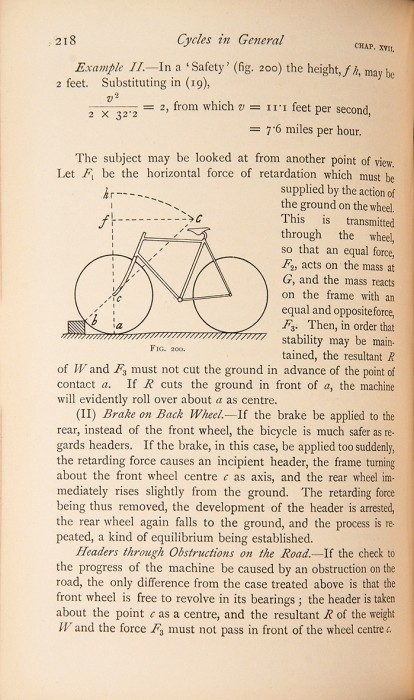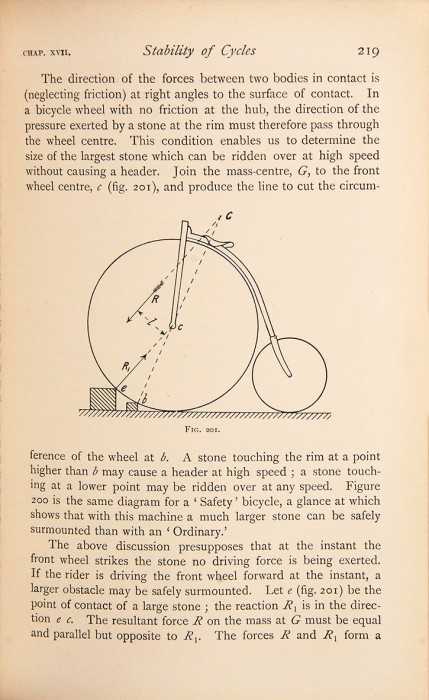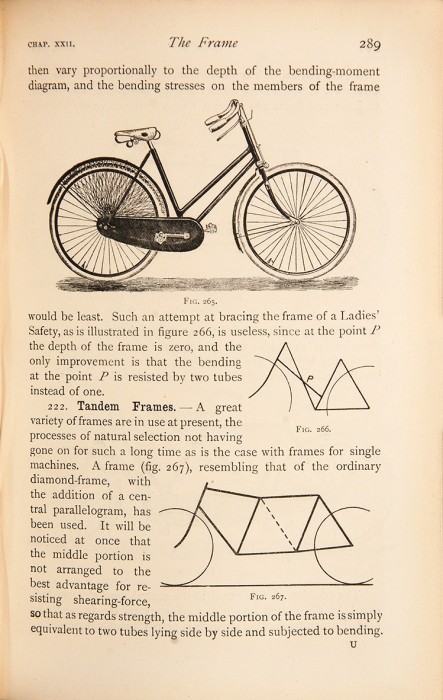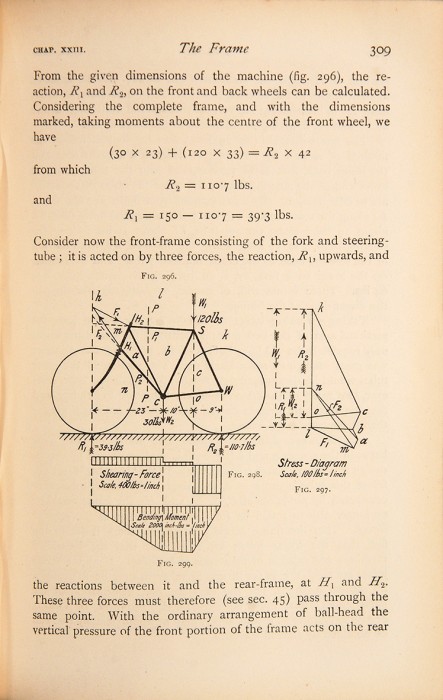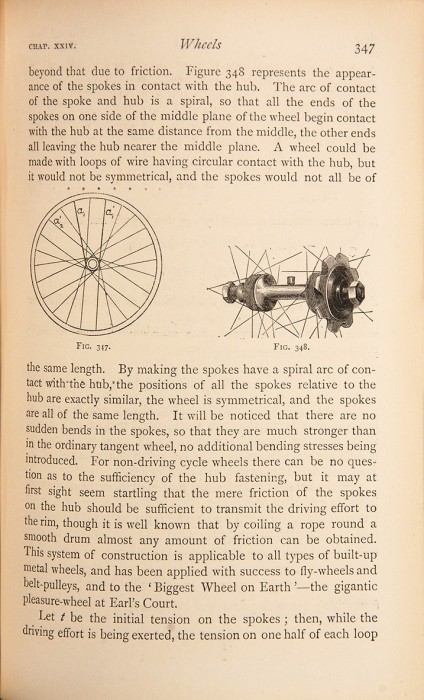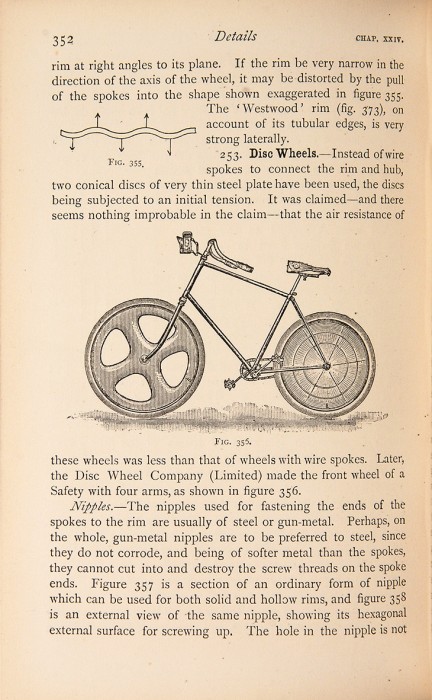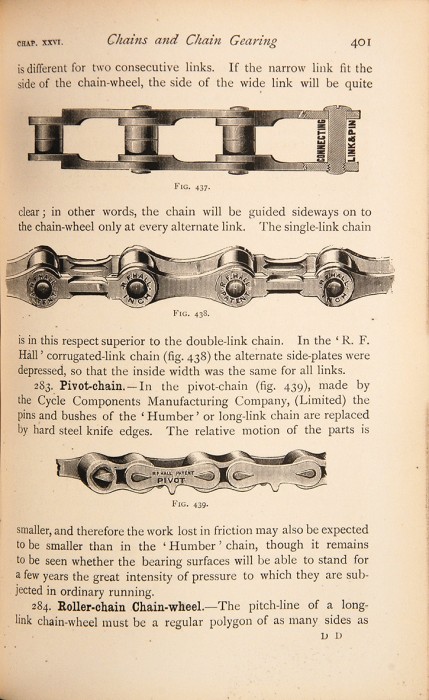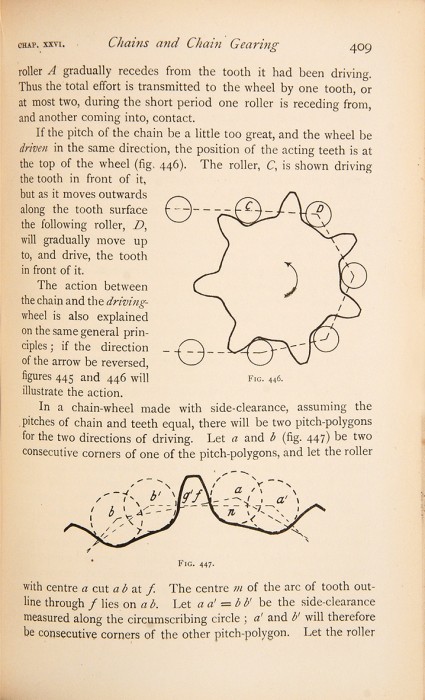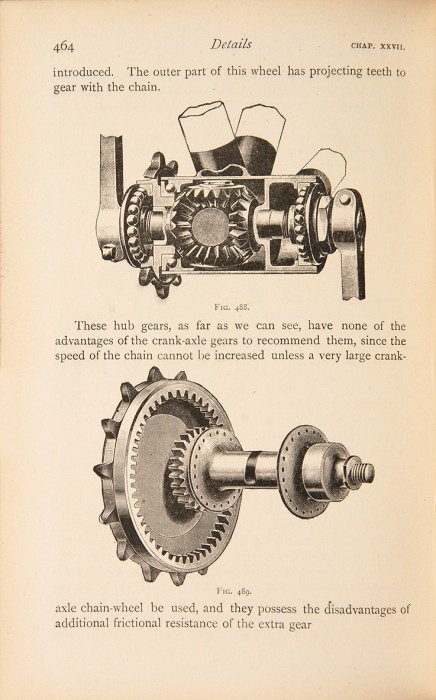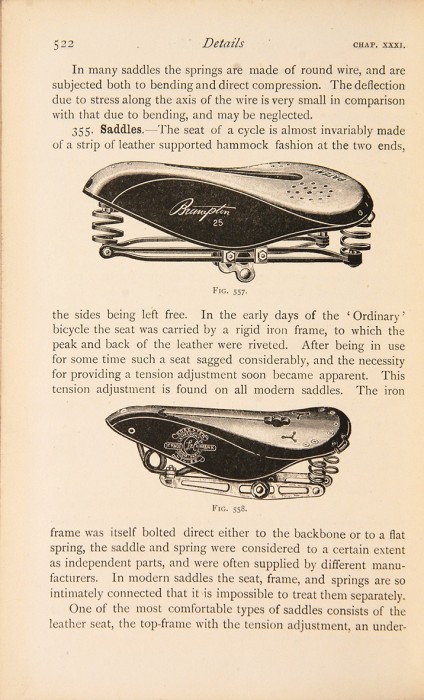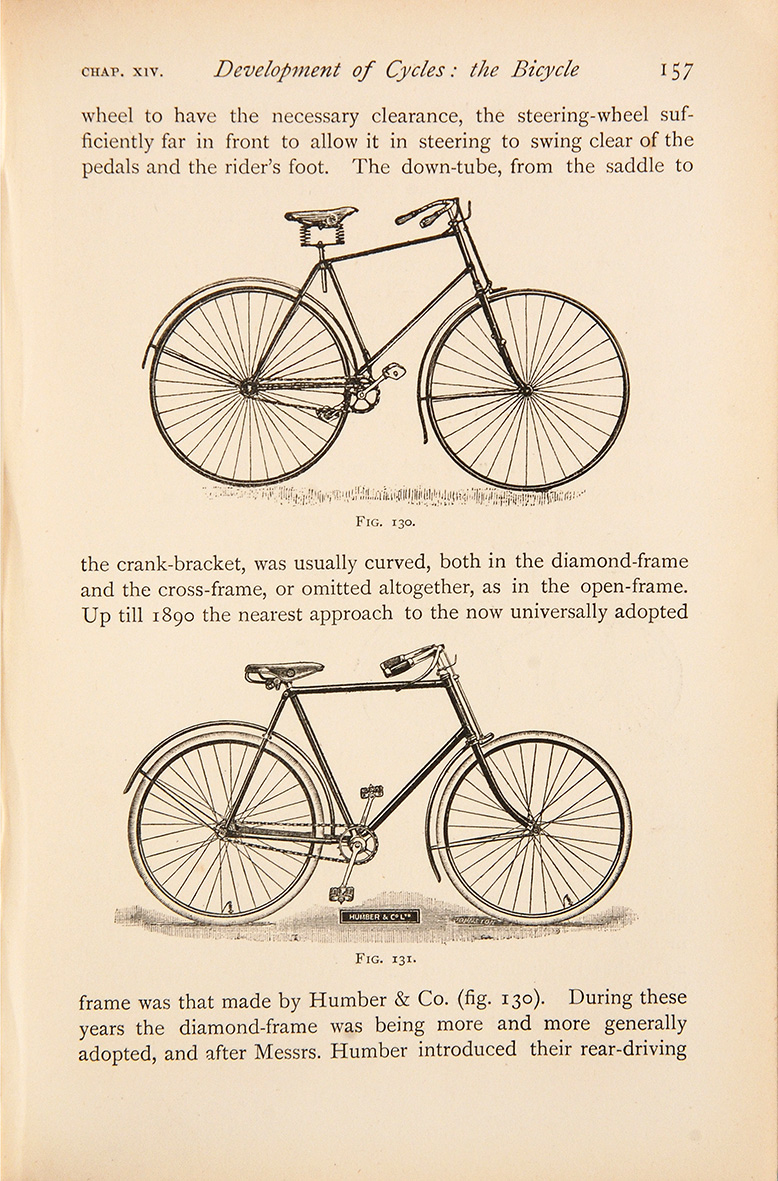
Page from Archibald Sharp’s Bicycles and Tricycles: An Elementary Treatise on their Design and Construction, first edition, 1896.
With cycling undergoing a renaissance in Britain, it seems an appropriate moment to look back to the beginning of the sport and to what is perhaps the greatest bicycle manual ever written, Archibald Sharp’s Bicycles and Tricycles: An Elementary Treatise on their Design and Construction. (Book Sold)
The first pedal-powered, two-wheeled vehicle, the velocipede, was developed in the mid-1860s. Cumbersome and fitted with wooden or metal wheels, they were so uncomfortable that they became known as “bone-shakers”. It would take another twenty years of technological innovation before bicycles became comfortable, convenient, and safe enough for the general public, but when they did they created a revolution. Bicycles provided quick and cost-effective transportation for low-wage workers, who could now live further from work and enjoy greater flexibility in their leisure pursuits. Women found in the bicycle a new form of freedom, and the machine soon became associated with the suffragists, with the American campaigner Susan B. Anthony writing in 1896, “I think has done more to emancipate women than any one thing in the world”.
By the 1890s bicycles were incredibly popular, and there was need for a comprehensive guide to their design and maintenance for the general public. In stepped Archibald Sharp, an instructor of engineering design at London’s Central Technical College of South Kensington (which would be incorporated into Imperial College in 1907). Sharpe was a bit of a mechanical genius, having already invented the spoked tension wheel, which “dramatically improved a bicycle’s stability and balance” (Popular Science, December 1997). But he also knew how to write about technical matters in a clear and accessible way, and stated in the preface to Bicycles that he hoped the book would be of use not only to technicians, but also to “cycle riders who take an intelligent interest in their machines”.
Sharp certainly achieved this goal. As soon as it was published, Bicycles and Tricycles was recognized as “the definitive work on all manner of velocipedes… Profusely illustrated, it provides a cornucopia of information on the mechanics, engineering, kinematics, and construction of the machines that did more than anything to emancipate ordinary folk from limited lifetimes spent within walking distance of their home” (New Scientist, December 1977). It wasn’t superseded for decades, and is today considered one of the great classics of bicycle literature.
One of the most appealing aspects of the book is the large number of illustrations, depicting everything from the physics of bicycle motion to frame designs (both practical and fanciful), and the details of components like gears and chains.
Below, a selection of wonderful images from the book, and links for further reading:
Further reading:
- Social Change: Suffragettes and Workers on Bikes.
- Women on Wheels: The Bicycle and the Women’s Movement of the 1890s.
- How the Bicycle Became a Symbol of Women’s Emancipation.
- How 19th-Century Cyclists Paved the Way for Modern Motorists’ Roads.
Click here for our complete selection of rare and first edition books on sports and leisure.

